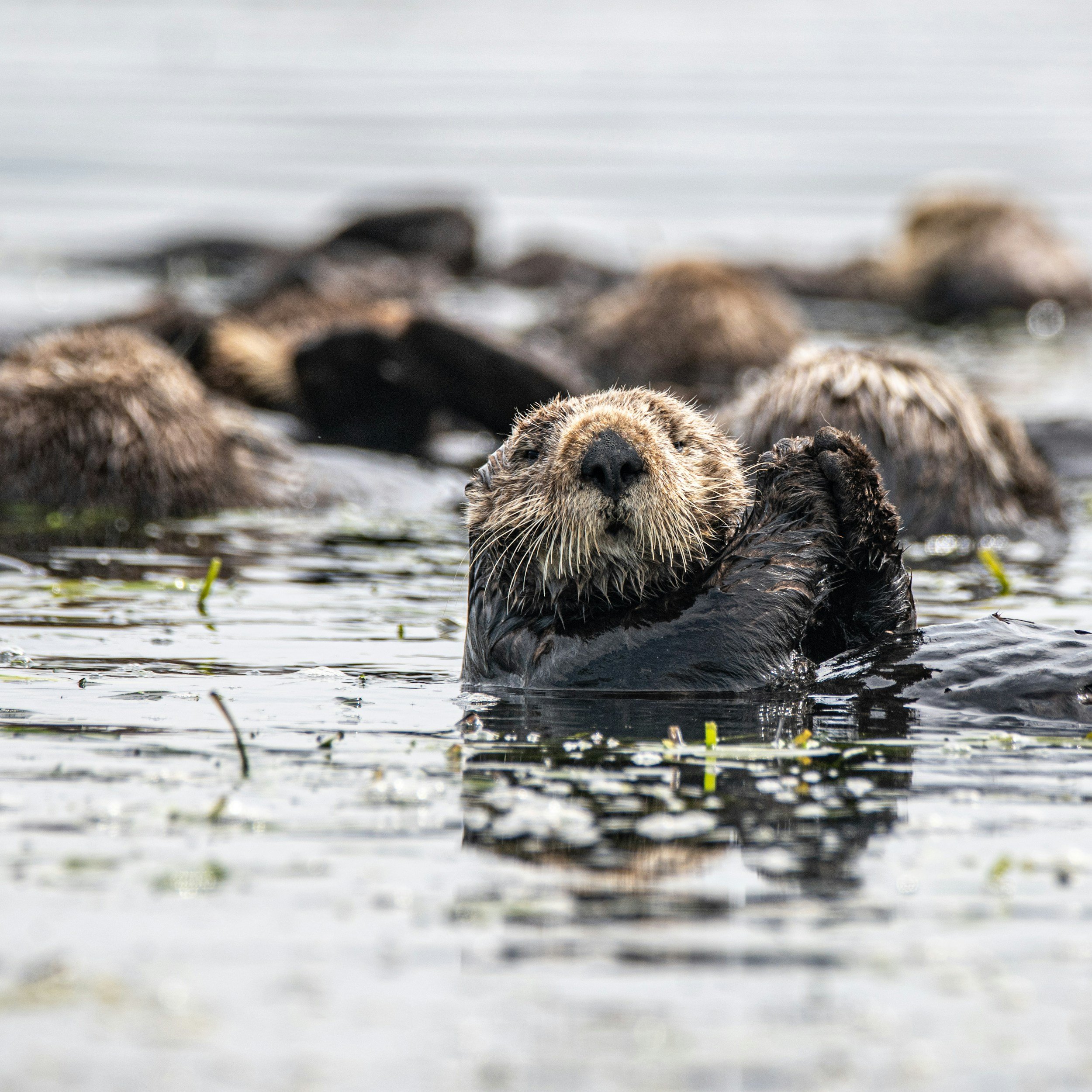SAVE THE SEA OTTERS
Welcome to Save The Sea Otters club, which is open to all! Come learn about Sea Otter’s habitat, diet, characteristics, status, importance, ways to take action and more!
More info here
Habitat
Northern Sea Otters live in Alaska, Aleutian and Commander Islands, Vancouver Island, Washington and California kelp forests. Kelp can grow more than 100 ft. tall! They prefer shallow, rocky waters. They typically live less than half a mile from the shore. Because they live in kelp forests, they wrap themselves in kelp to keep from floating away.
Diet
Sea Otters eat food too! Actually, they spend half their day hunting for food. They can stay underwater for 6 minutes, which comes handy for hunting. Sea Otters mostly eat invertebrates such as, mussels, clams, crabs, squid, fish, sea urchins and octopuses.
Importance
Sea Otters are very important in our world. Wait, why are they so important? Well, they are a key stone species. That means a lot of animals depend on Sea Otters. Without Sea Otters, the sea urchins multiply. And sea urchins eat kelp. So imagine an army of sea urchins, they’ll need a lot of food. Fish hide and lay their eggs in the kelp forests. Sea lions and eagles hunt in kelp forests for their food. Abalones, clams, sea stars, octopuses, sea worms, shrimp, crabs and sea snails also live in these kelp forests. So in summary, Sea Otters are really, REALLY important.
Reasons it’s endangered
Sadly, Sea Otters are endangered. The most common thing that makes Sea Otters endangered are oil spills. Oil spills are bad for animals because it causes hypothermia; their fur becomes contaminated with oil, which destroys their insulation purposes. Another reason is people have hunted a lot of Sea Otters for their soft, soft fur. It began in the 1700’s and lasted into the early 1900’s. Their population decreased from 300,000 to about 1,000. It ended in 1911, when United States, Japan, Russia, and Great Britain signed the Fur Seal Treaty. They started to come back to Washington in the late 1960’s and early 1970’s.
About my project
Hi I’m Madison! Together we will learn about some creatures we share the planet with, Sea Otters! Learn their ways of living and fast facts along the way. Now, let’s dive into the amazing world of Sea Otters!
One way to help is to acknowledge what’s happening, what is the problem, and how to fix it. If you want to do this but don’t know where to start, tap the learn more button to get started!


